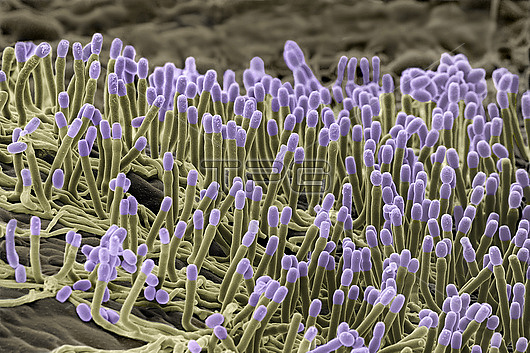
Scanning electron micrograph of Erisyphe fischeri on a leaf of grounsel, Senecio vulgaris. The picture shows the leaf surface covered with fungal hyphae (yellow) from which arise upright stalks - conidiophores - that terminate in a cylindrical capsule (lilac) containing conidia (spores). E. fischeri is an ascomycete fungus; its visual appearance on leaves gives rise to the name powdery mildew. Its life cycle begins when a spore lands on a leaf. The spore first produces an anchor, the appressorium, and then a tube that penetrates the leaf to produce a haustorium, that extracts water from the leaf cells. A network of surface hyphae is then developed, followed by conidiophores, as here. Although exposed to the air, powdery mildews are resistant to dry conditions. Some Erisyphe spp are serious pathogens of crops, including pea and cereals. Mag x 120 at 10x8
| px | px | dpi | = | cm | x | cm | = | MB |
Details
Creative#:
TOP26537963
Source:
達志影像
Authorization Type:
RM
Release Information:
須由TPG 完整授權
Model Release:
N/A
Property Release:
N/A
Right to Privacy:
No
Same folder images:

 Loading
Loading